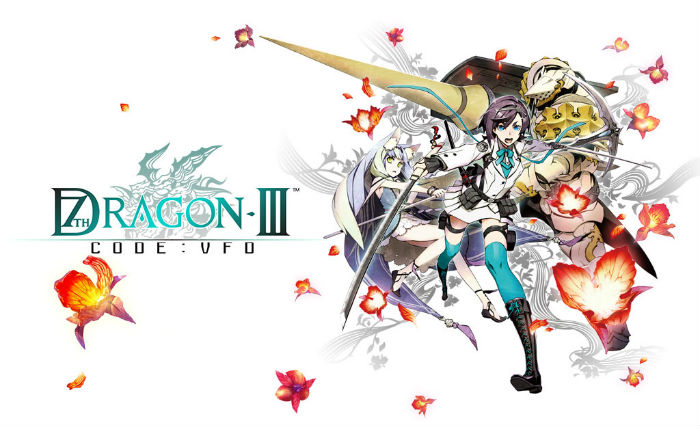
7th Dragon flies onto North American shelves
Classical role-playing game fans take note: SEGA’s 7th Dragon III Code: VFD for Nintendo 3DS has finally arrived, and it was well worth the wait. This is the fourth entry in the formerly Japan-only franchise, now available on our shores for the very first time. Nintendo 3DS is home to some of the best RPGs on the market—franchises like Pokémon, Etrian Odyssey, Shin Megami Tensei, and Bravely come to mind—and 7th Dragon III belongs right up there on that esteemed list. This is the RPG you’ll want to be playing this summer.
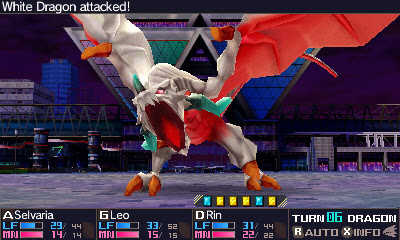 Its path to western audiences
Its path to western audiences
The 7th Dragon series has a rather unusual history, and I found its twisty-turny journey to North America particularly fascinating. Originally created by Imageepoch (Luminous Arc, Stella Glow) and published by SEGA, the first game in the franchise, simply titled 7th Dragon, released on Nintendo DS way back in 2009. Many of the core elements introduced in this game, such as creating your own characters from a variety of specialized classes, first-person turn-based battles, taking on optional side quests, and theme of defending the earth from an extraterrestrial dragon invasion, have all carried forward through the franchise over the years.
Next came 7th Dragon 2020 and 7th Dragon 2020-II, two spin-off prequels on PSP set in a near-future Tokyo, featuring a greater emphasis on dungeon crawling and post-modern, polygonal graphics. Both games built upon the established class system, and continued the main premise of ridding the earth of alien dragons bent on using brute force, and the dissemination of poisonous flowers known as Dragonsbane, to destroy humanity.
That brings us to the fourth game in the series, and the first to be localized in English, 7th Dragon III Code: VFD. Following Imageepoch’s bankruptcy last year, SEGA assumed full control as developer and publisher of 7th Dragon III, and through their acquisition of Atlus—which included the Atlus USA localization team—more SEGA games (including this one) are being translated for the North American market. Considering how incredible 7th Dragon III is, it’s too bad we never got official, localized versions of the first three games (“unofficial” fan-translations do exist) but at least we are able to enjoy this exceptional latest entry.
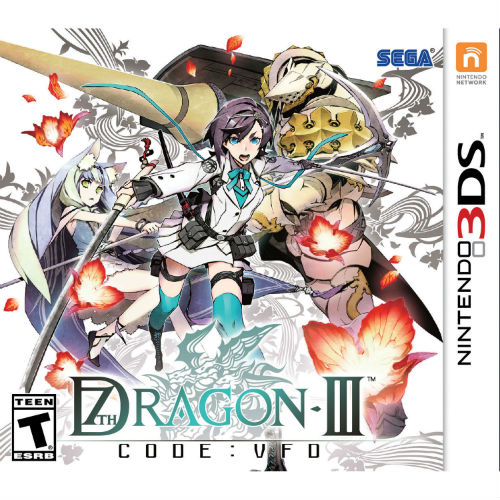 Game Details
Game Details
Platform: Nintendo 3DS
Developer: SEGA
Publisher: SEGA
Release Date: July 12, 2016
Genre: Role-playing
Modes: Single-player
ESRB Rating: T (Teen, 13+)
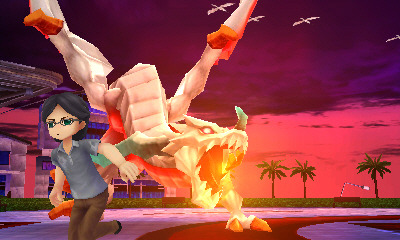 A great introduction to the series
A great introduction to the series
With this being the fourth game in the series, the obvious initial question I had going into this review was: “can you enjoy this game without having played the prior ones?” From my experience, absolutely you can. There are some references to the 7th Dragon lore covered in the previous games, but by and large it’s a self-contained story and a fine entry point for the franchise as a whole. Ironically enough, 7th Dragon III is supposedly the final entry of franchise’s current story arc, making this the first—and perhaps the last—7th Dragon game we’ll ever get to play.
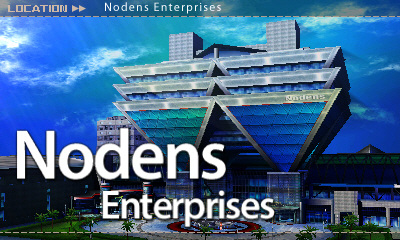 Become an elite dragon hunter
Become an elite dragon hunter
7th Dragon III is set in the year 2100, approximately 80 years after the events of the last game. You, a mostly silent protagonist living in Tokyo, get the chance to test out the latest and greatest VR game in town—7th Encount—developed by a foreign video game company called Nodens. After successfully vanquishing some dragons within the simulation, it’s revealed by Nodens’ quirky top brass that the game is merely a front to see who has the natural ability and courage to slay dragons; qualities your character possesses in spades. According to Nodens’ estimations, humanity is about to face its greatest threat yet: the arrival of 7th and most fearsome “True” dragon, codenamed VFD.
From there you’ll time travel to the past, present, and future to take samples of dragons to help Nodens complete the “Dragon Chronicle,” a biological code that the company believes holds the key to stopping this catastrophic Dragon invasion. Along the way you’ll meet a passel of offbeat, charming, and thoroughly entertaining characters that make this whole adventure very memorable. Credit must be given to the scriptwriters and localization team for 7th Dragon III, as meticulous effort went into crafting each of the main NPC’s personalities, from the distinct manner in which each of them talk, right down to the way individual characters inject symbols—stars, music notes, tildes, etc.—into their speech.
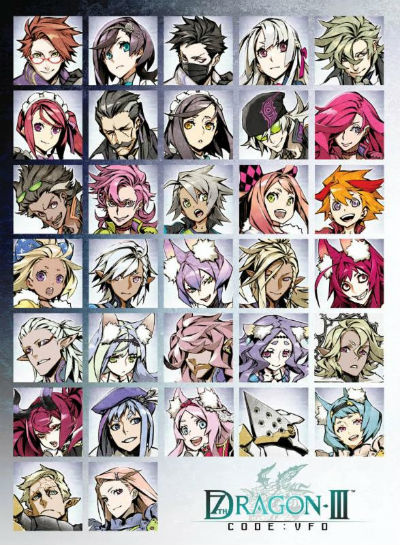
Build you dream team
The character creation system in 7th Dragon III is exceptional and sets the bar that I hope future JRPGs will follow. At the beginning you can choose from a variety character models, each possessing two very different alternative skins, and then you can further customize your characters by choosing from three colour palette swap variants. Not only that, but you can also select their class independently, since no model is locked down to any one particular class. In my team, I have a mysterious, masked, cyber punk Samurai leader, who’s backed up by an adorably cute cat-eared Mage, and a suave, mustached, pistol-wielding Agent. Customizing these characters sure was a lot of fun, and I love how you can break the mold by placing characters in any role you desire.
All the character designs by Japanese manga artist Shirow Miwa are top-notch, and I really loved both their in-game avatars and colourful character portraits. To further customize your characters, you can also select from 40 different voice actors (20 female/20 male), giving you even more freedom to tailor characters exactly to your liking. As far as classes go, initially you’ll have four to choose from—God Hand, Samurai, Agent, and Duelist—with four more becoming available as you work your way through the story. You’ll also unlock new avatars from the time periods you visit, such the advanced sea kingdom of Atlantis, and the futuristic, medieval-inspired land of Eden.
What’s interesting too is you’re able to create your first team of three characters right from the get-go, and as you play, you can add two more full teams, for a total of nine playable characters in your party at any given time. You can create even more characters if you want, with the remainder waiting for you at the Nodens dormitory until you call them into service. By the end of the game you’ll have a staggering 96 different possible combinations of avatars/alternative skins/colours in which to build you dream team from, so customization aficionados can have a real field day here.
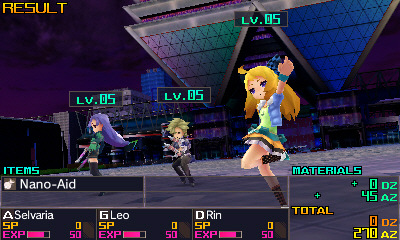 Immensely strategic gameplay
Immensely strategic gameplay
The traditional turn-based combat in 7th Dragon III is incredibly well-designed and reveals layers upon layers of strategy the more time you put into it. Every character class in the game feels fresh and distinct thanks to their exceptionally diverse skillsets, varying stats and stat growth path, and uniqueness within the RPG genre itself. Take the God Hand class as example, this hand-to-hand martial artist can inflict successively more powerful attacks by inflicting “God Depth,” essentially a counter that measures the level of injury enemies have sustained. At the same time, God Hands are fantastic healers and can revive KO’ed teammates in a pinch. Deciding whether you want your God Hand to focus on dishing out heavy damage, or spend their time keeping the team’s health high, is a crucial decision that changes battle strategies in significant ways—and that’s just one class.
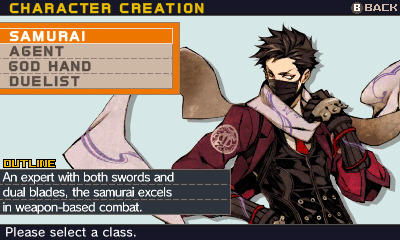 Agents are one of my favourite classes, and these characters are expert marksmen that also possess the ability to “hack” enemies. An extremely useful move they can do is spend one turn firing bullets in all directions that will then ricochet around the battlefield and damage enemies in subsequent turns. Alternatively, hacking enemies can restore your party’s MP, weaken enemies for powerful attacks, and you can even turn two hacked foes against one another to really turn the tide of battle. There are so many different approaches you can take with just a single class that experimenting becomes half the fun.
Agents are one of my favourite classes, and these characters are expert marksmen that also possess the ability to “hack” enemies. An extremely useful move they can do is spend one turn firing bullets in all directions that will then ricochet around the battlefield and damage enemies in subsequent turns. Alternatively, hacking enemies can restore your party’s MP, weaken enemies for powerful attacks, and you can even turn two hacked foes against one another to really turn the tide of battle. There are so many different approaches you can take with just a single class that experimenting becomes half the fun.
The superb list of classes doesn’t stop there. Samurais are balanced warriors that are essentially two classes in one, depending on whether you equip them with a longsword or dual blades. They have completely different abilities at their disposal for both types of weapons, each offering their own strengths in battle. Duelists, another class, are especially neat; these summoners begin battles with two elemental cards, ranging from Fire/Lightning/Ice, and all their abilities require you to have specific cards in your deck. If you need a particular type of card to unleash a powerful attack, Duelists can wait out a turn to obtain a card of their choosing; however, I found it’s a lot more fun to just run with whatever cards you’re dealt since that adds a nifty element of surprise to each and every battle. There are four more classes in the game that are just as strategically deep and exciting to try out, and I had a blast mixing and matching classes to discover game-winning permutations.
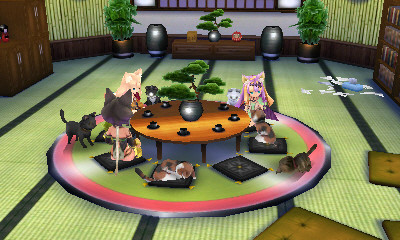 Upgrade your HQ
Upgrade your HQ
When you not busy exploring the vast, intriguing dungeons that 7th Dragon III throws at you, your time will be spent hanging out at the Nodens headquarters based in Ariake, Tokyo. Initially, you’ll only have access to a select few floors of this skyscraper, but as you defeat dragons and collect “Dz” points, you can use this currency to unlock and upgrade facilities. First, you’ll need a dormitory for your team, then later you’ll build all kinds of new facilities like a Medical Ward, Skylounge, Reference Room, Portal Room, Evac. rooms, and as you can see in the picture to the left, a gloriously cute Cat Café.
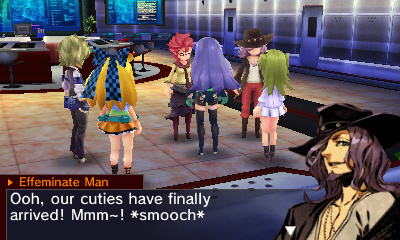 Most of these constructed areas have very specific purposes, such as the Portal Room that is used to teleport through time-space, and my personal favourite, the Skylounge used to go on “dates” with fellow teammates. Exploring the full range of facilities Nodens has to offer is quite enjoyable, firstly because the characters you meet are so lively and kooky, and secondly because the music is just so gosh darn catchy. Hilarious standout characters include Nagamimi, a potty-mouthed talking rabbit doll that sort of acts like your creepy mentor, Julietta, Nodens technology leader who loves to subtly (and later, overtly) throw in inappropriate flirtations, Yuma, an International Self-Defense Force member all too keen to prove he’s the better dragon slayer, and Allie, Noden’s self-confident, vivacious CEO who always goes with her gut feeling (despite the protests of those around her.) Even the Nodens shop keepers, twin sisters named Chika and Rika, are extremely amusing with their polar opposite views on work—Chika just adores work and overtime, while Rika hates her job and complains about being overworked. All in all, the Nodens HQ main hub area is a delightfully charming place to visit, develop, and explore.
Most of these constructed areas have very specific purposes, such as the Portal Room that is used to teleport through time-space, and my personal favourite, the Skylounge used to go on “dates” with fellow teammates. Exploring the full range of facilities Nodens has to offer is quite enjoyable, firstly because the characters you meet are so lively and kooky, and secondly because the music is just so gosh darn catchy. Hilarious standout characters include Nagamimi, a potty-mouthed talking rabbit doll that sort of acts like your creepy mentor, Julietta, Nodens technology leader who loves to subtly (and later, overtly) throw in inappropriate flirtations, Yuma, an International Self-Defense Force member all too keen to prove he’s the better dragon slayer, and Allie, Noden’s self-confident, vivacious CEO who always goes with her gut feeling (despite the protests of those around her.) Even the Nodens shop keepers, twin sisters named Chika and Rika, are extremely amusing with their polar opposite views on work—Chika just adores work and overtime, while Rika hates her job and complains about being overworked. All in all, the Nodens HQ main hub area is a delightfully charming place to visit, develop, and explore.
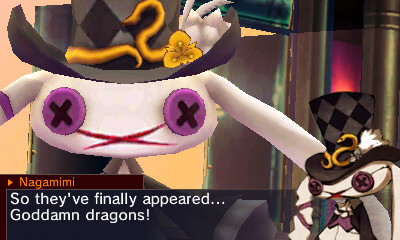 Wonderful soundtrack, but no 3D graphics
Wonderful soundtrack, but no 3D graphics
Musically, 7th Dragon III has one of the greatest soundtracks I’ve ever heard in a JRPG. Created by the legendary music composer Yuzo Koshiro (Streets of Rage, Y’s, Actraiser), every tune in this game is expertly crafted to fit the situation, from the jazzy, piano-heavy music in the Skylounge to inspire romance, to the invigorating, upbeat battle track that gets you in the mood to fight. Even when I was playing this game in comfort of my own home, I still defaulted to using headphones just so I could hear every last ounce of goodness in the game’s musical score.
It’s too bad though that graphically, 7th Dragon III falters. While I thought overall the graphics were adequate (I particularly enjoyed the character art), there are no 3D effects in the game whatsoever. After just playing 3DS JRPGs like Fire Emblem Fates and Bravely Second, two games with outstanding use of 3D, 7th Dragon III’s visuals feel cardboard flat by comparison. With that said, each of the three worlds you visit during the adventure (Tokyo, Atlantis, and Eden) have unique visual styles with eye-catching architecture, and there are some particularly stunning set pieces that punctuate the experience.
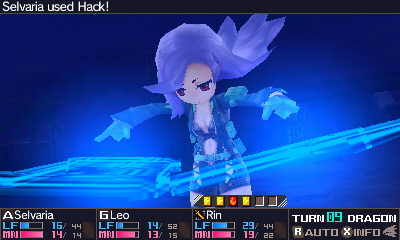
Final Thoughts
SEGA’s 7th Dragon III Code: VFD is a brilliant, top-notch JRPG that keeps you thoroughly entertained over its lengthy 40-50 hour campaign. There’s just so much to enjoy here: the gameplay is deep and strategic, the character customization is highly robust, the story pacing craftily moves from intense moments to laugh out loud comic relief, and the music is downright phenomenal. It’s a shame then that there’s no 3D effects at all; one blemish in an otherwise easy to recommend game. If you enjoy JRPGs, do you yourself a favour and rush out to get this game. You can thank me later.
+ Excellent character customization options
+ Distinct, deeply strategic character classes
+ A fun story with great pacing
+ NPC characters you’ll fall in love with
– References to other games not available here
– No 3D graphic effects
SCORE
Gameplay: 4.5/5
Graphics: 3.5/5
Sound: 5/5
Lasting Appeal/Replayability: 5/5
Overall Rating 4.5/5 (90%)
Get 7th Dragon III Code: VFD for Nintendo 3DS



